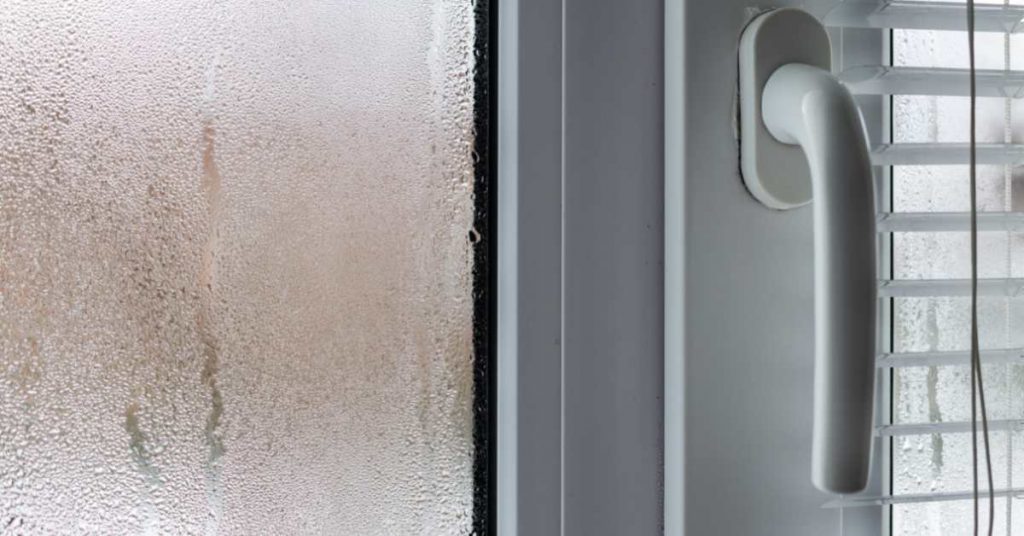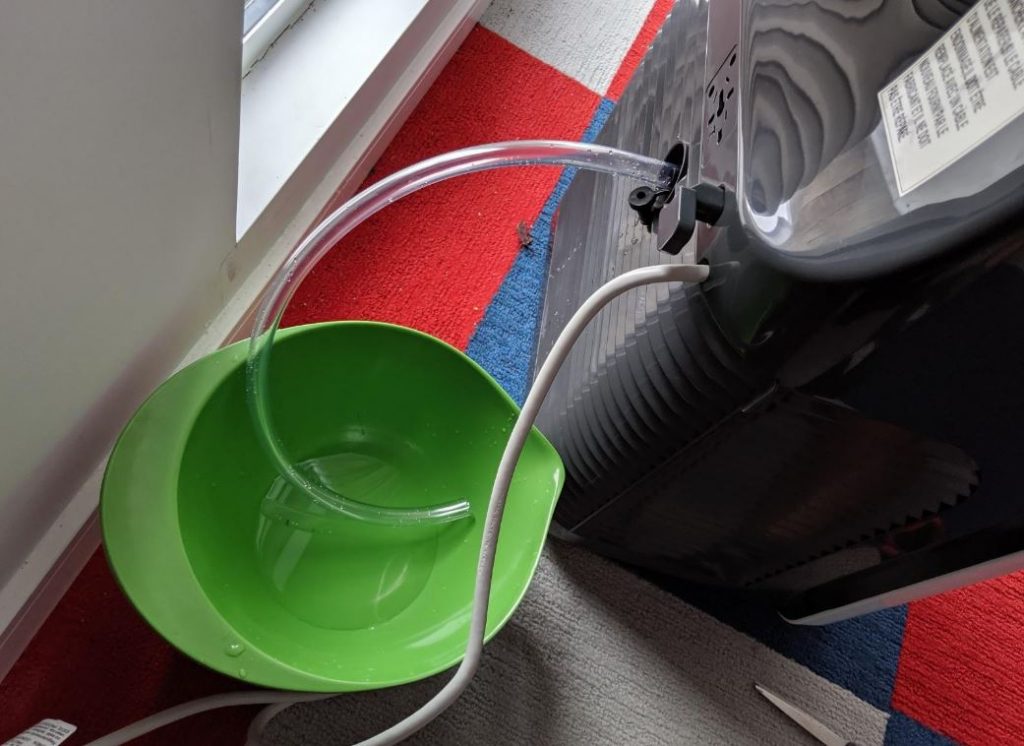
Emptying a portable air conditioner (AC) is a crucial maintenance task to prevent water overflow and maintain the unit’s efficiency. Here’s a summary of how often and how to empty a portable AC:
Frequency of Emptying:
- Continuous Drainage: Some portable AC units come with a continuous drainage option, allowing you to connect a hose to the unit and direct condensate water to a drain or a container. With continuous drainage, you won’t need to manually empty the water tank.
- Manual Emptying: If your portable AC does not have a continuous drainage option, you will need to empty the water tank regularly. The frequency of emptying depends on the humidity level in your area and the capacity of the unit’s water tank. In humid conditions, you may need to empty it daily, while in drier climates, it may be less frequent.
Steps to Empty a Portable AC:
- Turn Off the Unit: Before emptying the water tank, make sure the portable AC is turned off and unplugged for safety.
- Locate the Water Tank: Open the access panel or remove the water tank from its designated location. The tank is typically located at the bottom or back of the unit.
- Empty the Tank: Carefully remove the water tank, taking care not to spill any water. Empty the contents into a drain, sink, or suitable container. Some portable AC units have a convenient carry handle on the tank for easy removal and transport.
- Clean the Tank: After emptying the tank, rinse it with clean water to remove any residue or buildup. Allow it to dry thoroughly before reinstalling it.
- Replace the Tank: Place the empty and clean water tank back into its designated slot or location within the portable AC unit.
- Check for Leaks: Before restarting the portable AC, inspect the tank and surrounding areas for any signs of leaks or damage. Address any issues promptly to prevent water damage.
- Restart the Unit: Plug in and turn on the portable AC to resume cooling.
Factors Determining How Often to Empty a Portable Air Conditioner
It is frustrating when you are looking for a simple answer to a question only to be slapped with “it depends”. This is one of those times.
To be honest, there is no a simple answer on how often to empty a portable AC unit. It will depend on the following factors:
- Relative humidity
- Settings
- Usage
- Unit model/brand
The status of the portable AC unit also determines how much water it produces and hence how often you need to empty it. Poorly maintained AC units will fill up with water quickly thereby needing to be emptied frequently.
1. Relative Humidity

Relative humidity is basically the amount of water vapor in the air, expressed as a percentage of the total amount of water that the air can hold at that temperature. “At that temperature” is bolded because temperature directly affects the relative humidity.
During summer when temperatures are high, relative humidity is high but when temperatures fall in winter the relative humidity levels also fall. However, there is more to relative humidity than just temperature.
Location also plays a big role in determining the relative humidity. Coastal areas have high humidity than areas farther away from water bodies. That is the reason why humidity in Florida is higher than that of Arizona, despite Arizona being quite hot in the summer.
As I mentioned, air conditioners dehumidify the house apart from just cooling the air. If there is a portable air conditioner in Florida where average humidity is 74.5% and another similar unit in Arizona where average humidity is 38.5%, you can expect the unit in Florida to be emptied way more frequently than the one in Arizona.
The air in Florida is concentrated with water vapor while the air in Arizona is hot but dry. As a result, there is a lot of condensation on the Florida’s unit coil while there is almost none in the Arizona unit.
2. Settings
How low or high have you set your portable air conditioner temperature? If you have set it too low, perhaps in a bid to cool a bigger room, it means that the indoor air is being cooled to colder degree which also means that more condensation is taking place and more water is being formed.
Therefore portable AC with low temperature settings will produce more condensate and will need to be drained more frequently than units set at normal settings.
3. Usage
How long do you use your portable air conditioner in a day? Does it run for only a few hours or it runs day and night?
Needless to say, the more the AC unit cycles air through the cooling coils the more water it produces. As long as the indoor air is humid condensation will keep taking place.
Portable air conditioners that run for long hours will need to be emptied more frequently than those which only run for a few hours in a day.
4. Unit Model/Brand
All portable air conditioners are not made equal. Some are bigger than other (with big condensate tanks) and some are more modern and efficient than others.
To start with, if you have a small portable AC unit, it means it also has a small condensate drain tank which will fill up quicker than another bigger unit used to cool a room of a similar size.
As I mentioned, some units will use the condensate to cool the evaporator coil hence turn it from liquid to gas and is afterwards exhausted out. Such units will not need regular emptying.
Also, if you have a single-hose portable AC unit, it is normal for such units to create negative air pressure inside the room, forcing humid air from outside the room to be sucked in. If the air being sucked in is quite humid (like from the bathroom, kitchen or basement), the tank will fill up quickly necessitating to be emptied.
On the other hand, dual-hose portable AC are properly vented and may take longer to fill up the condensate drain tank.
What Happens if You Don’t Empty Your Portable Air Conditioner?

One of the first thing that will happen if you don’t empty your portable air conditioner is that it will automatically turn off. The AC condensate drain tank has a float switch which if water level exceeds the set level level it cuts off power to the unit forcing it to turn off
When the unit is off, not only will it fail to cool your indoor air but it will also stop producing more water. If air cannot cycle through the evaporator/cooling coil, condensation cannot occur. This systems prevents the unit from overflowing and flooding your house.
If somehow the system does not work, the tank will fill with water and overflow. That can really damage your house especially if you have a wooden floor.
Leaving the condensate drain tank with water also creates a humid environment for mold to grow. Within no time, there will be a musty smell coming from your air conditioner.
How to Drain a Portable AC with Hose
If you are tired of manually draining your portable AC, there is an easy method you can use to drain it automatically.
- Check the size and type of drain port at the rear end of your unit.
- Purchase a drain hose and a connector elbow fitting to match your unit.
- Turn off the unit and drain out the water in the tank.
- disconnect exhaust hose.
- Connect the elbow fitting to the drain port and then the drain hose to the fitting.
- Direct the other end of the hose to a floor drain, outside or to a sink drain.
- connect exhaust hose back.
- Turn on the unit and check if it will drain properly.
To allow your unit to drain efficiently with the help of gravity, you can place it in an elevated position like on top of a stool.
Why Your Portable AC Fills with Water Quickly
The main reason why portable ACs fill with water quickly is high humidity. If the relative humidity in your area is high, the unit is not faulty and is just doing its job.
Dirty air filter or evaporator coil could also be the reason. They restrict the flow of air to the unit forcing more condensation to take place and/or the evaporator coil to freeze. Eventually when the ice starts to melt, the unit fills with water quickly.
A new unit or one which is being turned on the first time in the season could also make water fill the condensate tank quicker than is the norm. Since there will be lots of moisture trapped in the house (in carpets, rugs, furniture etc.) the first few days the unit will be pulling out that moisture causing the tank to fill up quickly.
Humid air coming from the outside can also make the tank fill up quickly. That is especially if you have opened windows, crawlspace with no vapor barriers, unfinished basement or open crawlspace vents.
Other reasons are:
- Faulty condensate pump
- Clogged drain holes
- Bad fan blower
- Clogged condensate drain line
For more information on this subject, check out this post. And basically that is all on the frequency of emptying portable air conditioners and the related queries.





